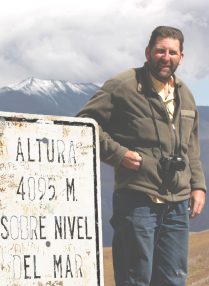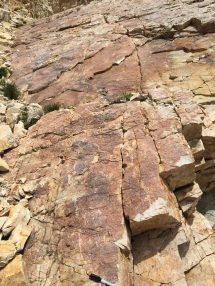Blog
Comments on progress in understanding brittle rock fracture and chemical change
A review of the role of chemistry in fracture pattern development and of prospects for future research was recently published in Reviews of Geophysics. As a prestigious review publication by invitation only, Reviews of Geophysics provides a comprehensive overview of geophysics research. Fracture pattern development has been a challenging area of research in the earth…
Shale (or mudrock) geomechanics as well as natural and hydraulically induced fractures in shale continue to be areas of intense Structural Diagenesis Initiative research. Already in 2019, the Initiative has published 10 papers covering specific aspects of these topics. Additionally, a forward-looking overview paper in Reviews of Geophysics, Laubach et al., 2019, points to future…
Deformation mechanisms are the various processes, usually at the grain scale or smaller, that are responsible for accommodating penetrative strains in rocks. Under the low temperature (less than 300℃) conditions of sedimentary basins, grain-scale deformation processes are a part of diagenesis, the microstructural and chemical changes that turn sediments into rock and that through time…
At depth in the Earth, rocks are geochemically reactive environments. In the presence of hot water, both cement precipitation and dissolution can occur. In many rocks, cement deposits are a principal control on whether or not fractures are open. In sandstone, for example, core observations show that in a given play, field, or bed some…
Initiative researchers have for the first time quantified fractal clustering of fractures in basement rocks. The study demonstrates self-organized clustering over a length scale range from 10-2 to 101 m for opening-mode fractures in texturally homogeneous granitic rock in the Teton range, Wyoming. This example and the rigorous spatial arrangement method used in the study…
An initiative paper will receive the AAPG Petroleum Structure & Geomechanics Division Best Recent Paper Award at the 2019 ACE meeting in San Antonio in May. The paper, Correlation analysis of fracture arrangement in space by Randy Marrett, Julia Gale, Leonel Gomez and Steve Laubach was published in the March 2018 issue of Journal of…
Natural fractures, the more or less planar discontinuities in rock, include faults and opening-mode fractures, based on displacement direction relative to the orientation of the fracture walls. A considerable part of SDI research focuses on opening-mode fractures. These are particularly challenging for reservoir simulation because they are difficult to sample and commonly below detection limits…
The history of the pressure, temperature, and composition of fluids is fundamental to understanding how the Earth works. This type of information is also of great practical value to ore deposit and hydrocarbon exploration. Such thermometric data is obtained from minute amounts of fluids trapped by various natural processes within minerals. Analysis of fluid inclusions…
Natural fractures are increasingly recognized to result from processes that couple mechanical failure and chemical reactions. Chemical reactions aid fracture growth through stress corrosion, whereas sealing, tip blunting, and crack-jump in response to chemical mass transfer and creep processes can impede further fracture growth and alter size and spacing patterns. Chemical-mechanical interactions affect spatial and…
Andras Fall, Esti Ukar and Steve Laubach recently reported on using combined scanning electron microscope-based cathodoluminescence (SEM-CL) and electron backscattered diffraction (EBSD) image analysis with fluid inclusion microthermometry to constrain the origin and timing of Dauphiné twins in quartz cement bridges. Electron backscattered diffraction techniques (EBSD) show that Dauphiné twins in quartz are widespread in…












